#but this is educational. Zionism is not Judaism and this proves that.
Text
an ex-zionist jewish man recently went a bit viral on tiktok for sharing exactly how he sees zionism tie israel to the jewish identity and his personal experience with breaking away from it - I think it’s a really great watch.
He also made a follow up talking specifically about how he learned to humanise Palestinians, and a really integral part of it was his school, which would often bring in Palestinian speakers who’d share their perspective (here’s a link to it).
#tiktok against all odds inspires a lot of hope in me bc of how prevalent palestinian support is over there#so much of the younger generation is so media literate and articulate about standing up to oppression#and getting perspectives like this I think is really beneficial when it comes to understanding where Zionist talking points come from#I don’t particularly think right now our priority should be reaching out to zionists or anything#it should always be Palestinians at the forefront of activism our activism#but this is educational. Zionism is not Judaism and this proves that.#it’s never too late to turn away from oppressive propaganda and have empathy for your fellow man#palestine#israel#free palestine#from the river to the sea
11K notes
·
View notes
Text
To the lovely American Nonnie, who told me that all antisemitism is bad, but leftist antisemitism is the worst because "they are being protected and celebrated. By media, pop culture, and academia. With no middle ground," I agree. The anti-Israel type of antisemitism is, without a doubt, the most socially accepted kind. It's the only kind that someone can spew, and get publicly applauded. The only kind where someone can celebrate the massacre of Jews, and either there are no consequences to that, or there finally are, and then that person and their supporters can pretend they're a martyr, being "persecuted" for being "critical of Israel," when in reality legit criticism of Israel is a very different thing to bias against the only Jewish state, and that person is just another Jew hater.
But I don't think it's just that.
I think it's also the fact that most antisemites are at least honest about hating Jews. The anti-Israel type of antisemitism tries to pretend it's not Jew hatred. So you'll get the hypocrisy of wishing Jews a Happy Hanukkah, a Zionist holiday, while attacking Zionism, and claiming it's incompatible with Judaism. Or you'll have people telling you how important it is to them to combat antisemitism, then they'll turn around and spit out leftist antisemitic conspiracy theories, that instead of saying Jews use the blood of non-Jewish kids to bake matzos, claim the Jewish state only sent a field hospital to Haiti after the earthquake, to harvest human organs. Or they'll proudly announce they're not antisemitic, and to "prove" it, they'll tokenize Jews, which is an antisemitic act in itself. And the worst is when they won't even listen to Jews who tell them that they're being antisemitic, or worse, they'll claim Zionism is antisemitic, which would make 90% of Jews, as well as the Bible itself, antisemitic. It's gaslighting Jews and non-Jews on what is Judaism and what is antisemitic. Other types of antisemites don't do that.
I also think this kind of antisemitism is particularly infuriating, because of the deep discrepancy between the values the left is supposed to stand for, and how they abandon those values when it comes to Jews. "Believe all women!" suddenly isn't applied when Israeli Jewish women are mass raped. "Violence is never the answer! Taking a human life is always wrong!" Then suddenly when Israeli Jews are massacred, and we get explanations on why violence is legit if people are occupied, even when it's translated into mass murder.
And lastly, there's the discrimination, because the left would never treat any other marginalized group the way it does Jews. "Don't speak over a minority group! Listen to their lived experiences!" Then a Jew tries to explain why anti-Zionism is antisemitic, and suddenly all the non-Jew leftists are bigger experts than us on Jewish history and and hatred of Jews, and we're not listened to when we talk about our persecution in the Middle East pre-modern Zionism (meaning the persecution and repeated massacres of Jews in the Middle East is being denied, in a way no one on the left would dare deny, for example, that the transatlantic slave trade happened), or how much anti-Zionism threatens non-Israeli Jews. "Educate yourself" is a common call, but no one feels the need to properly educate themselves on Jewish history, identity and native rights, or worse, they read propaganda from anti-Israel sources only, and think that's the same as educating themselves, as if when they're about to write about any other marginalized group, they would only take in the "education" of those that the group says hate it. "Ethnic cleansing is the worst!" the left says, while chanting slogans that, at the very least, call for the ethnic cleansing of Jews from the Jewish ancestral homeland, and no one gives a damn about us when we point this out. "None of us is free until all of us are free!" goes the intersectionalist call of the left, but Jews are excluded from that. No one cares about modern Zionism being our liberation movement, and we are sometimes physically removed from spaces that are supposed to be dedicated to marginalized groups, as was done to my friend at the Chicago Dyke March, when she wanted to hold a Jewish pride flag, under the claim that the Jewish pride flag makes Palestinians at the march feel unsafe... How safe did queer Jews feel in that moment, or when learning about that incident? But no one cares.
Sending lots of hugs from Jerusalem to you, in the US! xoxox
(for all of my updates and ask replies regarding Israel, click here)
#israel#antisemitism#israeli#israel news#israel under attack#israel under fire#israelunderattack#terrorism#anti terrorism#hamas#antisemitic#antisemites#jews#jew#judaism#jumblr#frumblr#jewish#ask#anon ask
148 notes
·
View notes
Text
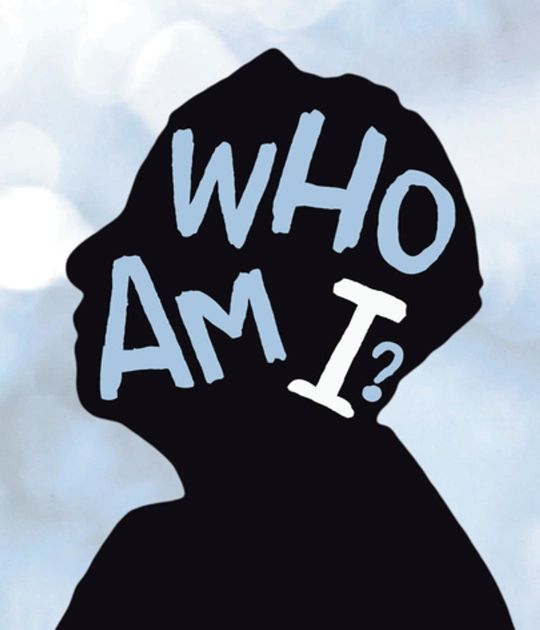
The deepest question any of us can ask is: Who am I? To answer it we have to go deeper than, Where do I live? or What do I do? The most fateful moment in my life came when I asked myself that question and knew the answer had to be: I am a Jew. This is why.
I am a Jew not because I believe that Judaism contains all there is of the human story. I admire other traditions and their contributions to the world. Nor am I a Jew because of anti-Semitism or anti-Zionism. What happens to me does not define who I am: ours is a people of faith, not fate. Nor is it because I think that Jews are better than others, more intelligent, creative, generous or successful. It’s not Jews who are different, but Judaism. It’s not so much what we are but what we are called on to be.
I am a Jew because, being a child of my people, I have heard the call to add my chapter to its unfinished story. I am a stage on its journey, a connecting link between the generations. The dreams and hopes of my ancestors live on in me, and I am the guardian of their trust, now and for the future.
I am a Jew because our ancestors were the first to see that the world is driven by a moral purpose, that reality is not a ceaseless war of the elements, to be worshipped as gods, nor history a battle in which might is right and power is to be appeased. The Judaic tradition shaped the moral civilisation of the West, teaching for the first time that human life is sacred, that the individual may never be sacrificed for the mass, and that rich and poor, great and small, are all equal before God.
I am a Jew because I am the moral heir of those who stood at the foot of Mount Sinai and pledged themselves to live by these truths for all time. I am the descendant of countless generations of ancestors who, though sorely tested and bitterly tried, remained faithful to that covenant when they might so easily have defected.
I am a Jew because of Shabbat, the world’s greatest religious institution, a time in which there is no manipulation of nature or our fellow human beings, in which we come together in freedom and equality to create, every week, an anticipation of the messianic age.
I am a Jew because our nation, though at times it suffered the deepest poverty, never gave up on its commitment to helping the poor, or rescuing Jews from other lands, or fighting for justice for the oppressed, and did so without self-congratulation, because it was a mitzvah, because a Jew could do no less.
I am a Jew because I cherish the Torah, knowing that God is to be found not just in natural forces but in moral meanings, in words, texts, teachings and commands, and because Jews, though they lacked all else, never ceased to value education as a sacred task, endowing the individual with dignity and depth.
I am a Jew because of our people’s passionate faith in freedom, holding that each of us is a moral agent, and that in this lies our unique dignity as human beings; and because Judaism never left its ideals at the level of lofty aspirations, but instead translated them into deeds which we call mitzvot, and a way, which we call the halakhah, and thus brought heaven down to earth.
I am proud, simply, to be a Jew.
I am proud to be part of a people who, though scarred and traumatised, never lost their humour or their faith, their ability to laugh at present troubles and still believe in ultimate redemption; who saw human history as a journey, and never stopped traveling and searching.
I am proud to be part of an age in which my people, ravaged by the worst crime ever to be committed against a people, responded by reviving a land, recovering their sovereignty rescuing threatened Jews throughout the world, rebuilding Jerusalem, and proving themselves to be as courageous in the pursuit of peace as in defending themselves in war.
I am proud that our ancestors refused to be satisfied with premature consolations, and in answer to the question, “Has the Messiah come?” always answered, “Not yet.”
I am proud to belong to the people Israel, whose name means “one who wrestles with God and with man and prevails.” For though we have loved humanity, we have never stopped wrestling with it, challenging the idols of every age. And though we have loved God with an everlasting love, we have never stopped wrestling with Him nor He with us.
I admire other civilizations and traditions, and believe each has brought something special into the world, Aval zeh shelanu, “but this is ours.” This is my people, my heritage, my faith. In our uniqueness lies our universality. Through being what we alone are, we give to humanity what only we can give.
This, then, is our story, our gift to the next generation. I received it from my parents and they from theirs across great expanses of space and time. There is nothing quite like it. It changed and still challenges the moral imagination of mankind.
I want to say to Jews around the world: Take it, cherish it, learn to understand and to love it. Carry it and it will carry you. And may you in turn pass it on to future generations. For you are a member of an eternal people, a letter in their scroll. Let their eternity live on in you.
(Thank you The Rabbi Sacks Legacy this is incredible!)
Rabbi Yisroel Bernath
36 notes
·
View notes
Note
You have absolutely no idea what this Palestine/Israel conflict is about. You are a westerner, you do not live here, you do not know about the atrocities both Palestinians AND Israeli people are facing. You're just some random person online who has no idea what you're talking about. All of you liberals are the same. You claim you care about the world but you don't. You don't get to sit there and claim you "support Palestine" and be antisemitic at the same time. Grow the fuck up and realize the world is not black and white.
so i’m sure you’re hoping i react personally to this and somehow put my foot in my mouth to somehow prove your point that i am, apparently, antisemitic.
here’s what i’ll say instead:
i’m well aware that i am a westerner. i am well aware that my tax money is currently funding a genocide. being a westerner does not mean i’m inherently unaware of what’s happening in the world. i know that i don’t live there. i never claimed to personally understand what it’s like to live in this situation. i’m entirely aware of my privilege and my luck in life.
i have seen dozens upon dozens videos of dead children in gaza. civilians dead in gaza, the west bank being attacked. i have seen a palestinian father running with their headless toddler in their arms, distraught and not knowing what to do. i have heard many first hand accounts of what day to day life is like in gaza. in the west bank. in israel. the palestinian experience is vastly different than israeli.
almost every claim and piece of propaganda posted by the israeli government and ios has been debunked and proven to be false. the ones that haven’t have plenty of reason to doubt the truth behind them but not concrete evidence to make it officially debunked.
i would love for you to go back to any post i have made or reblogged about what is happening and quote back to me, with the post linked or a screenshot as proof, where i can said or shared anything antisemitic. i mean this genuinely. i have been educated by others and have educated myself in the fact that zionism does not equal judaism and being anti-zionism does not mean being antisemetic. but if there is something i have said or shared that is genuinely antisemitic, PLEASE point it out to me so that i can learn to do better. i am a human being with little reach and little impact. i know i am not perfect and i am always open to learn how to be and do better. show me my mistakes and i will own up to them and do better moving forward. i will do what i can how i can where i can. show me where i am wrong and i will learn from it.
1 note
·
View note
Photo
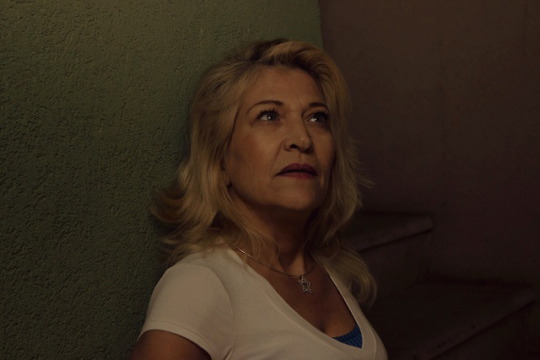
Focusing a New Lens on Mizrahiness
“Generation(s) of Levantines” by Leeor Ohayon
view the accompanying documentary photography series following the essay
“What exactly are you trying to capture? Which community? There just isn’t such a thing as Mizrahi,” my interviewee told me shortly. He had a point; what on earth was I trying to document?
Being of mixed Moroccan and Adeni heritage and having attended Jewish schools in London all my life, I became very much aware of the erasure of Mizrahi and Sephardic Judaism in the public realm. Jewish studies at school were conducted around an Ashkenazi-centric reading of history that began in Warsaw and ended with the Khurva synagogue in Jerusalem. Israeli Independence Day was celebrated with Klezmer music in the auditorium and dry falafel for lunch.
Mizrahi histories and cultures have been sacrificed at the altar of a collective Jewish imagination. That is to say-- our understanding of Judaism and Jewish memory is always conducted through the Ashkenazi experience, by Jews and non-Jews alike. The Ashkenazi label has become the default face of Judaism and Jewishness, and consequently is often found interchangeably replaced with just “Jewish.” Non-Ashkenazi cultures, in comparison, are hyphenated, asterisked, and put in boxes-- if not shelved entirely.
Perhaps that’s why heading to Israel to document Mizrahim proved to be my own Mizrahi education. I was confronted by the fact that my understanding, despite seeing myself as well versed in Mizrahi history, was coloured by my experience as a Mizrahi in the UK. Ashkenormativity alienates Mizrahim everywhere, but in Israel there is an entire political and social commentary surrounding this subject that often feels absent in the West.
When my interviewee asserted to me that there’s no such thing as “Mizrahi,” he was technically right. Mizrahiness is what professor Ella Shohat referred to as an “imagined community” borne of interactions with Ashkenazi Israel that ethnicised Mizrahi Jews.
So vast is the cultural, linguistic and geographic space that Mizrahi groups occupy that no single aspect could be said to be the unifying factor between them. Neither as followers of the Sephardic rite - Yemenite Jewry proving an exception to that - nor as hailing from a geographic East – for example in the case of North African Jews - and neither in a common lingua franca, like Yiddish for Ashkenazi Jewry.
Rather its formation merely owes itself to the fact that as Jews hailing from Islamic majority places, they endured a shared destiny as non-Ashkenazi Jews in an Ashkenazi state. They went from simply being Jews in their countries of origin to being Mizrahim in Israel.
There are many things to consider while photographing a subject as vast as Mizrahi identity. I had to account for the variation within it in my work, so I held many interviews across the country, with Mizrahim of all stars and stripes and all walks of life, in an attempt to better understand how to capture Mizrahiness.
When I asked my interviewees to point me towards what they considered as Mizrahi, I was told repeatedly to “go to the periphery”. The simple reason being that in the Israeli “periphery-” the localities of the north and south historical “frontiers” that lay outside the economically prosperous stretch of Israel’s central belt cities, I was to find “authentic” Mizrahiness like it “used to be.” Supposedly, unlike the residents of the Gush Dan metropolitan area, the inhabitants of this stretch of land were not altered by “modernity”.
In this assertion, the interviewees implied (perhaps unconsciously) that Mizrahi traditions and modernity could not be reconciled. The subtext was that to be “authentically” Mizrahi meant to exist outside of modern society. Aside from the fact that the quest for cultural authenticity is futile, many had used the same orientalist tropes that have historically been used to reduce Mizrahim to exotic folklore at odds with modernity.
Such a notion is as old as Zionism itself, which initially relegated historic Mizrahi and Sephardi communities in Eretz Yisrael outside of an Ashkenazi reading of history. A Jewish “return” to a “land without a people” was fundamentally an Ashkenazi return that refused to recognise that a society of Jews and non-Jews alike already existed in historic Palestine.
Likewise, the Ashkenazi establishment belief that Mizrahim were “primitive” and “backward” ultimately led to the disastrous housing policies of the 1950s and 1960s that forcibly placed Mizrahim across volatile front-line borders and empty desert expanses, on the basis that their supposed naturally “primitive state” could withstand living in such harsh conditions without modern comforts and standards.
Those spaces that Mizrahim settled in became the Israeli periphery of today, which remains etched into the minds of many, including those I interviewed, as spaces outside of modernity.
And yet there is something to be said for the “periphery” as a space that has protected Mizrahi identities and cultures. Particularly when the outskirts of Ashkenazi population centres are also taken into consideration- for instance, Tel Aviv’s southern districts or Jerusalem’s Musrara and Katamonim neighborhoods. These Mizrahi-majority areas served as incubators of a new ethnoreligious identity in Israel.
Mizrahi settlement in the ma’abarot (transit camps) and then in the moshavim (agricultural communes) and development towns that replaced them resulted in historic cultural and societal upheavals.
A break from the Mizrahi past in the diaspora was signaled on two levels, firstly, in Mizrahi settlers’ interactions with their new co-inhabitants that hailed from across the Muslim world; and secondly, in their interactions with the structures of Israel’s Ashkenazi-dominated bureaucracy- through its education system, the military, the employment service and so forth. These interactions took place against the backdrop of Mizrahi isolation from their countries of origin, given the lack of diplomatic ties between Israel and many Islamic and Arab states. The result of this discord is that successive generations of Mizrahim have been raised in a reality where their cultures have gone from being part of a two-millennia-old conversation with the broader region they inhabited to being relegated to the private spheres of home and synagogue within a culturally ‘western’ society.
It is precisely within these interactions with the state and against this backdrop of isolation that a new Mizrahi identity had begun to form on the margins of Israeli society. The subsequent result was an intra-Mizrahi conversation that has resulted in everything from a political consciousness to the birth of Mizrahit - a musical genre rooted in the experience of Mizrahi Jews in Israel.
One of the most apparent symbols of this cultural development is the modern Mizrahi attitude toward pre-wedding henna ceremonies: rituals that many interviewees had told me to avoid capturing for its lack of “authenticity” and as a worn cliché of Mizrahiness.
I shadowed henna planners and tagged along with them to wedding halls and synagogue basements across the country. Each time, I was greeted to a scene that evoked equal feelings of dismay and fascination. Hennas were conducted according to Moroccan cookie-cutter templates regardless of whether the participants were actually Moroccan or not.
I was told that the general gravitation toward the Moroccan tradition arose from the “fun costumes” and “lively atmosphere.” As the second largest Jewish ethnic group in Israel, Moroccans undoubtedly have left their mark on the nation’s collective cultural imagination. But the Moroccan way is also attractive, as one event planner pointed out to me, because many families want to host a henna ceremony but simply don’t know where to begin, as so many traditions were lost in the course of immigration and assimilation into Israeli society.
The modern resurgence of the henna ceremony owes itself to a growing movement of Mizrahi expression in Israel -- one that is increasingly vocal and unabashedly shameless. Yet it still reflects the literal Hebrew meaning of the word mizrah (east). It’s as though Mizrahiness is precisely just that - a smorgasbord of the East.
I witnessed a Moroccan-Yemeni couple split their ceremony in half allocating equal time to conduct a Moroccan henna and the Yemeni equivalent, a za’afa. I saw an Ashkenazi mother-in-law sitting in Moroccan dress at her Persian soon-to-be daughter-in-law’s henna, while the Persian grandmother sang in Farsi to the mixed crowd. I directed and photographed a henna photo shoot for a wedding magazine with sexed-up traditional dress. I witnessed things that can only be called pan-Mizrahi.
The act of carrying out a henna is perhaps one of the greatest testimonies to the perseverance of Mizrahi cultures and the simultaneous formation of something new. Hennas today pay tribute to a diasporic past that Israel’s founding fathers wanted forgotten in their quest for a Jewish Israeli national consciousness; they boldly pine for a different, newer Israeli identity, one better rooted in its geocultural neighbourhood.
In many ways, that pan-Mizrahi conversation is the closest resemblance to the vision of the unsung essayist, Jacqueline Kahanoff. Kahanoff was a French-educated Egyptian writer of Jewish Iraqi and Tunisian descent who proudly declared herself a Levantine when Israeli statesmen warned of the social and cultural “perils” that such an assertion could bring to Israeli society. In her essays, Kahanoff asserted that Israel should do its best to view waves of Jewish migration as an opportunity to formulate a new Levantine identity- one that emphasised integration with the region’s Arab communities. She named her philosophy Levantinism, and it is for her series of essays outlining this vision that this project is named.
While Kahanoff’s ideal has not necessarily come to fruition in Israel, a form of Levantinism has arguably manifested amongst Mizrahim.
On my journey, I also headed to a number of Israel’s heritage centres; small memorial-like independent museums that preserve the memory and traditions of Jewish communities from Aden to Kochi. A forty-minute bus ride from Tel Aviv takes you to the town of Or Yehuda, where both the Libyan Heritage Centre and the Babylonian Heritage Centre for Iraqis are found, separated only by a small stretch of road. The former, unlike the latter, is more austere and modest in appearance, but both heritage centres make an avid point of retrofitting Libyan and Iraqi Jewish histories within the Zionist narrative. Both heritage centres emphasised Jewish persecution under Arab Muslim rule and Mizrahi loyalty to the Zionist movement.
I was given a tour around the Libyan Heritage Centre by a guide who spoke of her own family’s suffering in the overlooked Libyan Holocaust. Few are aware that Libya, under Italian colonial rule, hosted the Giado concentration camp in which 562 Jews perished.
My guide relayed a real sense of frustration at Israeli society’s marginalisation of the Holocaust chapters that affected Jews in North Africa and the Balkans. “Why? Because we didn’t lose enough people?” she asked me.
Recognition of the Holocaust that blighted the Libyan community is a historical wrong that needs addressing. Its prevalence today is reflected in the fact that, in Israel, Holocaust remembrance has all the trappings of a civic religion. The memory of the Holocaust and the narrative of the Ashkenazi Zionist “pioneer” were core facets of Israeli identity building and the development of a collective national memory, and it is precisely due to the centrality of both such narratives in the Israeli national pantheon (at the expense of others) that Mizrahim have long felt shut out.
In the heritage center, as we toured countless rooms of wax figures clothed in regional Libyan dress, my guide reiterated the fundamental contribution of Libyan Jews to the Zionist movement, stopping by a series of black and white photographs to discuss Libyan involvement with Zionist youth groups. The role of Libyans in such groups was emphasized throughout the tour. Furthermore, the reiteration of Mizrahim as ardent Zionists was relayed to me in most of the heritage centres I visited and by many second-generation Mizrahim.
The centrality of the Ashkenazi “pioneer” to Israel’s founding story and the Mizrahi erasure within it have left successive generations of Mizrahim striving to be seen as equal partners in the Zionist project. It is that feeling of exclusion in particular, as many interviewees explained to me, that constitutes the origins of stereotypes like the Mizrahi vote for right-wing parties or the Mizrahi person who holds hawkish anti-Arab sentiments. The stereotypes echo the same historical processes that forced Mizrahim to prove themselves as loyal Israelis and to emphatically differentiate themselves from Arabs.
The desire to be written in as equals in the story of Israel’s founding is understandable; Mizrahim did partake in some of the most grueling aspects of state building. However, at the end of the day, the Zionist project was conceived as an Ashkenazi response to European antisemitism.
Devoid of the urgencies that Ashkenazi Jews faced in Europe, Zionism was unable to take root in the Arab world to the same effect. Members of the older generation, for the most part, were comfortable and secure in their homelands. In 1940s Iraq, for example, Zionist emissaries wrote of their despair in Iraqi Jews’ lacking resonance with Zionism. Zionism’s entrance into the Arab world was via the youth, offering Hebrew language classes and opportunities for the young to socialise, and even then only very modest numbers decided to immigrate as a result of Zionist ideals.
Rather, the reasons behind Mizrahi migration and flight are as complex as they are varied, taking place over a long period, from 1949-1979, continuing well into the 1990s. While state-sponsored discrimination was evident in Iraq in the late 1940s, it was the bombing of the Masuda Shemtov synagogue in 1951 - suspected by some to be the work of the Zionist underground - that truly propelled migration. In the case of the Moroccan Aliyot of the 1960s, Jewish emigration owed itself largely to the efforts of Zionist emissaries able to monopolise on the widespread uncertainty over the future following decolonisation and the Arab-Israeli conflicts, as well as genuine religious devotion. In Yemen, immigration owed itself to Messianic fervour and dire economic straits. And in some places, the reason for departure was explained to me as simply as “everyone was leaving, so we did as well.”
And yet the battle over Mizrahi memory continues. The same year of my arrival in Israel, the government declared the first Memorial Day for “the Departure and Expulsion of Jews from Arab countries and Iran” on November 30th. Mizrahi activists in Tel Aviv explained to me that such a holiday effectively rewrote history, asserting a single, rather than accurately pluralistic, narrative of Mizrahi flight and persecution. In doing so it pushes the idea of a “Jewish Nakba” which acts as a sinister counterweight to Palestinian displacement, while simultaneously asserting to Mizrahim that the key to being equal partners in Israel’s national memory is only through a narrative of eternal victimhood.
At the end of Passover, I headed to the Moroccan-majority development town of Yeruham to witness a “proper Mimouna.” I was enticed by the Moroccan pride I saw on display, moving between houses where front doors were left open for people to come and join. I was able to witness the essence of a Mimouna I thought lost in Israel’s big cities, warmed by the genuine hospitality of open doors that could only stay unlocked in a trusting environment.
The desert air and the individuals I met left me with a feeling that I had to return and spend a lengthier period in Yeruham. And so I did. I quit my part-time job, packed my bag, and headed down south in a move that baffled many people around me as I followed those endless cries:
“Go to the periphery.”
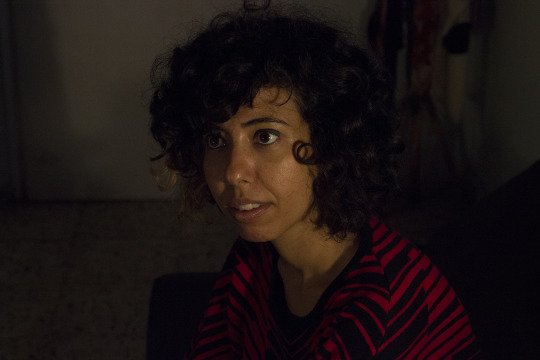
Adi Keissar, poet and founder of Ars Poetika, a Mizrahi and female-friendly poetic space in a field traditionally dominated by Ashkenazi men. Kerem-ha-Teimanim, Tel Aviv, 2015.
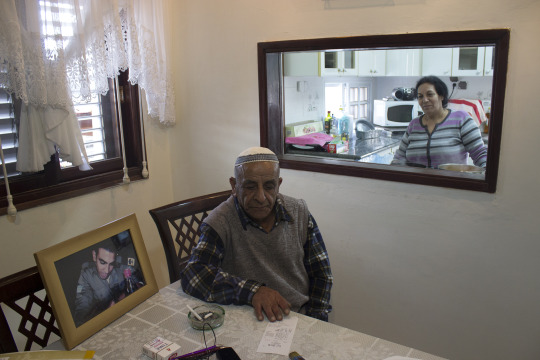
Interviewees in a Moshav Yinon, a Yemenite-majority agricultural village in central Israel, 2015.

My great-uncle Moshe Meshumar. He was part of the Shubelim band, one of the earliest players in the formation of Mizrahit music, a genre that combined electric guitars with Arabic, Turkish, Greek and Yemenite elements sung in Hebrew. Shabazi, Tel Aviv, 2015.
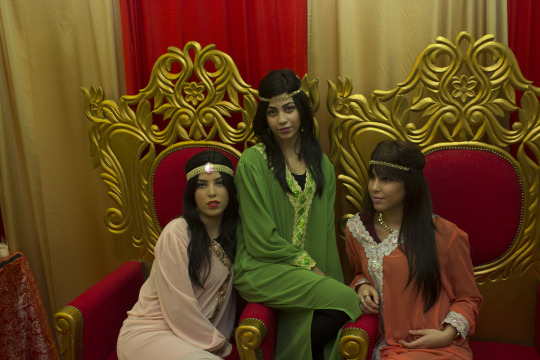
Girls dressed up at a Moroccan henna ceremony. East Jerusalem, 2014.
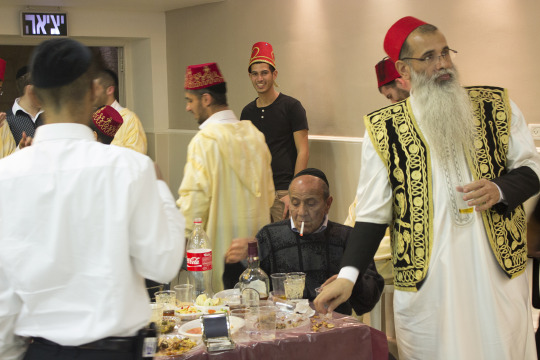
A Moroccan pre-wedding henna ceremony. East Jerusalem, 2014.
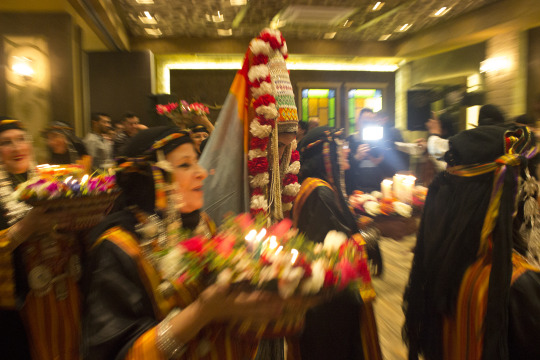
A bride wears the Tishbakh lulu (originally of the Sana'a region) and is accompanied to the hall for her pre-wedding za'afa, a ceremony comparable to the Moroccan henna. Binyamina, 2015.

A bride's grandmother sings to her at a Persian henna celebration. Rishon Le Zion, 2015.
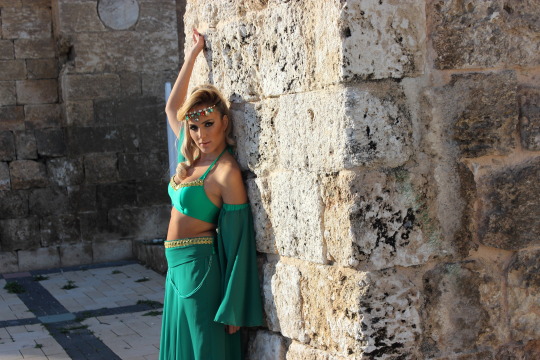
A photoshoot for a henna fashion magazine. Ramla, 2015.
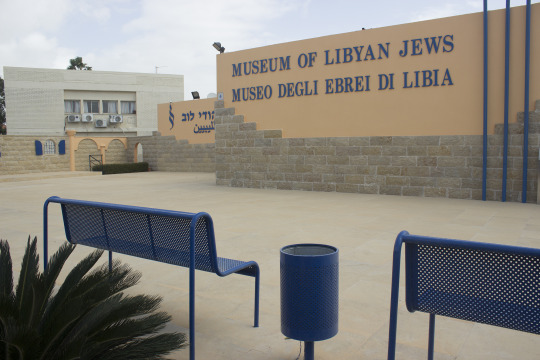
Libyan Heritage Centre, Or Yehuda, 2015.

Or Yehuda, 2015.

Ohel Moshe Yemenite syangogue, Moshav Yinon, 2015.
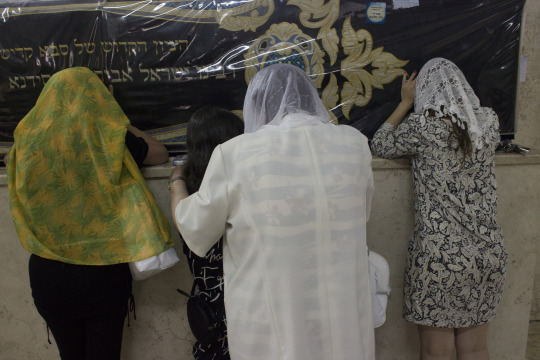
Women pray at the Baba Saleh Tomb. Netivot, 2016.

Beit Shemesh, 2014.
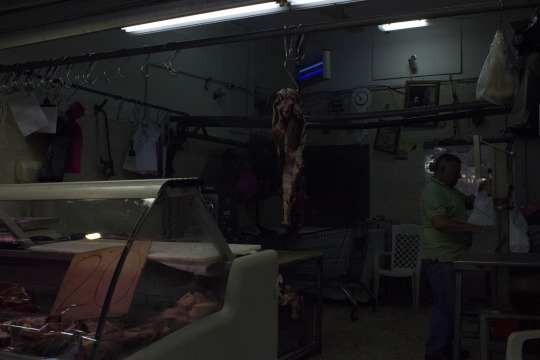
The shouk remains the domain of blue-collar Mizrahim and Palestinians. Carmel Market, Tel Aviv, 2015.
9 notes
·
View notes
Link
Warning: The following article contains disturbing and graphic language regarding the volatile and often violent nature of religious beliefs. It is meant to illustrate how religion has been used to spread hatred and intolerance of worldwide, in a variety of faiths. This short article is meant for educational purposes only, in the hope that humanity will learn from its past and not repeat it. Please note that it is almost entirely composed of quotes from other publications. Many people believe that religion is a force for good that has brought God into their lives. But, does the record of religious belief reveal it as a force for good or evil? Christianity--The Roots of Anti-Semitism "With the wrath of an Old Testament prophet, historian Dagobert Runes (whose mother was killed by the Nazis) blamed the Christian church for the Holocaust. He wrote: "'Everything Hitler did to the Jews, all the horribly unspeakable misdeeds, had already been done to the smitten people before by the Christian churches.... The isolation of Jews into ghetto camps, the wearing of the yellow spot, the burning of Jewish books, and finally the burning of the people--Hitler learned it all from the church. However, the church burned Jewish women and children alive, while Hitler granted them a quicker death, choking them first with gas.' "Dr Runes said Christian priests and ministers still were inculcating hostility to Jews as the Third Reich arrived. "'The clergymen don't tell you whom to kill; they just tell you whom to hate,' he wrote. 'The Christian clergymen start teaching their young at the tenderest age that THE Jews killed the beloved, gentle Son of God; that God Himself, the Father, punished THE Jews by dispension and the burning of their holy city; that God holds THE Jews accursed forever....' "'For all the 2,000 years, there was no act of war against the Jews in which the church didn't play an intrinsic part. And whenever there was a trace of mercy, charity, or tolerance to be found amid the savagery, it came not from the church but from humanitarians in the civil world, as in Napoleonic France or during the American Revolution....' "'Some fancy that these brutal outrages...occurred only in the Dark Ages, as if this were an excuse. Nay, when George Washington was president, Jewish people were burning on the spit in Mexico.... Wherever there are Christian churches there is anti-Semitism.'" Source:Holy Horrors by James Haught. Judaism--4,000 Years of Massacring Neighbors "The massacre at Dueima in 1948 was perpetrated by the official Labor Zionist Israeli army, the Israel Defense Forces (Tzeva Haganah le-Israel or ZA-HAL). The account of the massacre, as described by a soldier who participated in the horror, was published in Davar, the official Hebrew daily newspaper of the Labor-Zionist-run Histadrut General Federation of workers: "'They killed between eighty to one hundred Arab men, women and children. To kill the children they [soldiers] fractured their heads with sticks. There was not one home without corpses. The men and women of the villages were pushed into houses without food or water. Then the saboteurs came to dynamite them. "'One commander ordered a soldier to bring two women into a building he was about to blow up.... Another soldier prided himself upon having raped an Arab woman before shooting her to death. Another Arab woman with her newborn baby was made to clean the place for a couple of days, and then they shot her and the baby. Educated and well-mannered commanders who were considered "good guys"...became base murderers, and this is not in the storm of battle, but as a method of expulsion and extermination. The fewer the Arabs who remain, the better.'" Source:The Hidden History of Zionism by Ralph Schoenman. Slavery by the "Good People" "In another area of human rights, many Christian clergymen advocated slavery. Historians Larry Hise notes in his book, Proslavery, that ministers 'wrote almost half of all defenses of slavery published in America.' He listed 275 men of the cloth who use the Bible to prove that white people were entitled to own black people as work animals." Source:Holy Horrors God is a Psycho "In December 1984, on Mohammed's birthday, Khomeini told his people: "'War is a blessing for the world and for all nations. It is God who incites men to fight and to kill.The Koran says, "Fight until all corruption and all rebellion have ceased." The wars the Prophet led against the infidels were a blessing for all humanity. Imagine that we soon will win the war. That will not be enough, for corruption and resistance to Islam will still exist. The Koran says, "War, war until victory!..." The mullahs with corrupt hearts who say that all this is contrary to the teachings of the Koran are unworthy of Islam. Thanks to God, our young people are now, to the limits of their means, putting God's commandments into action. They know that to kill the unbelievers is one of man's greatest missions.' "Amid all the killing, Iran also declared war on sexuality. Women were commanded to shroud themselves so completely that no lock of hair showed. Morality patrols in white jeeps cruised streets, arresting women for being 'badly veiled' and sending them to prison camps for three-month rehabilitation courses. Western magazines entering Iran went first to censors who laboriously blacked out every woman's picture except for her eyes." Source:Holy Horrors Religion is Mental Illness "Philosopher Bertrand Russell wrote: "'Religion is based...mainly upon fear...fear of the mysterious, fear of defeat, fear of death. Fear is the parent of cruelty, and therefore it is no wonder if cruelty and religion have gone hand in hand.... My own view on religion is that of Lucretius. I regard it as a disease born of fear and as a source of untold misery to the human race.'" Source:Holy Horrors NEED WE SAY MORE? RELIGION EQUALS RACISM, SEXISM, SPECIESISM, SELF-HATRED, EXPLOITATION, SLAVERY, WAR. WE THE PEOPLE OF THE EARTH ARE ONE. NO RACES, NO RELIGIONS, NO DUALITY, NO WAR. ALL BELIEFS COMPRISE DOUBTS. KNOW THE TRUTH. STOP THE KILLING!! GO BEYOND BELIEF INTO THE KNOWN! BECOME RELIGIOUSNESS. MEDITATE.
2 notes
·
View notes
Text
There is more to the story than just the Jesuits:
According to end time prophecy, a one-world religion that will offer the promise of world peace is going help establish a one-world government; a system referred to in the bible as Mystery Babylon. In order for a one-world religion to establish a one world government, all religions must come together in an ecumenical plan. Today, we can see this taking place as the Protestant church is being drawn seductively into the Roman Catholic church.
The Roman Catholic Church, the Papacy, and its rituals and practices, are mirror images of the religion of ancient Babylon. But there is another religious system that has definite connections to ancient Babylon and its satanic traditions. That system is Judaism and the culture of World Jewry. Contrary to what most people think to be the case, Judaism is not the religion of the Old Testament and the prophets. Instead, Judaism comes from the same perverted spiritual fountain as does the Roman Catholic Church: Babylon. Judaism’s most holy book is the Babylonian Talmud, and the inner teachings of Judaism—an unscriptural, satanic religion embraced by its elders and high priests—is pure Babylonianism.
According to a recent book by Edward Hendrie, called 'Solving the Mystery of Babylon the Great', Mystery Babylon is both of Zionism and of Rome. 'The evidence', says Hendrie, leads to the inevitable conclusion 'that the Roman Catholic Church was established by crypto Jews as a false 'Christian' front for a Judaic/Babylonian religion.' Moreover, 'that religion is the nucleus of a world conspiracy against man and God.'
Philip Schaff (1819-1893) in his History of the Christian Church explains that from the beginning the Christian church was in a spiritual struggle against Judaism. Judaism could not win a head to head spiritual contest against Christianity. It was necessary, therefore, for the Jews to throw their efforts behind undermining the Christian church by injecting it with a Judaic contagion. Their long-term strategy was to change the Christian church from the inside out to align more closely with the Judaic/Babylonian theosophy. These Jewish infiltrators sought to wrest away the true Christian faith from the teachings and principles of the Apostles and the New Testament. The goal of these Jews was to remold the Christian Church into a weakened version of Pharisaism, itself based on dogma and practices the Jews had brought back to Jerusalem following their long Babylonian captivity. The attempt to penetrate the true spiritual church of Christ was futile. However, what this Judaizing strategy did accomplish was the creation of a new false 'Christian' church, which grew into what we know today as the Roman Catholic Church.
Since its foundation, the Catholic papacy has been zealous and often brutal in its endeavor to establish an empire of the Pope This determination was witnessed during the Inquisition where countless thousands died cruelly for resisting Rome. By the 1520s, Martin Luther's ideas crystallized opposition to the abuses and totalitarian control of the Church. This widespread theological revolt, called the Protestant Reformation, severely weakened the influence of the Catholic Church. In response, the Catholic Church founded the counter-reformation in order to destroy Protestantism.
This Counter Reformation was largely built by Ignatius Loyola, who founded the Jesuit* Order in 1545 and launched an all-out attack against those who dared stand against the papacy and Rome. Loyola had been a member of a Secret Mystery Babylonian religious sect called Los Alumbrados (Illuminati) in which initiated members claimed to be in possession of an 'Inner Light'. Loyola was also a crypto-Jew as were many Alumbrados. A crypto-Jew is a Jew who converts to another religion to escape persecution and outwardly embraces the new religion, while secretly maintaining Jewish practices The Alumbrados believe that when a person´s soul reaches this state of 'Perfection' and 'Union with God' they can commit any criminal, immoral or sinful act without guilt. This Babylonian Mystery religion teaches that Lucifer is the one that makes us realize the 'God within us' and evolve into our full potential without the need to repent. Although the Jesuit order has gentile priests as members, it was founded by Jews and today has close secret ties with other clandestine Jewish organizations. Benjamin Disraeli, a Jew and former Prime Minister of England, revealed that the first Jesuits were Jews. Ignatius Loyola’s secretary, Polanco, was of Jewish descent and was the only person present at Loyola’s deathbed.
From the inception of Christianity, the major enemy of God’s Church and the number one polluter and destroyer of Christendom has been Pharisaic Judaism. Moreover, Jewry, a culture which is controlled and directed by rabbinical zealots, has historically been hostile to the Christian Church and to this day does everything in its considerable power to undermine and poison the roots of Biblical Christianity. Jesus told us that the Jews’ religion is not of God but was constructed of man-made traditions. He bluntly accused the Pharisees (The Encyclopedia Judaica says that Pharisaism is today’s Orthodox Jewry): 'You are of your father the devil.'
Edward Hendrie proves from the Scriptures and from his own thorough investigation that the two-pronged Babylonian enemy of the Zionists and Rome are jointly involved in a despicable end time conspiracy against God’s Word and His saints. Together, they form the corrupt and ominous Mystery Babylon world system of evil pictured so poignantly in the book of Revelation.
________________________
*Jesuit notes:
'The Jesuit Order as a Synagogue of Jews' by Dr. Robert Aleksander Maryks, Boston College February 24, 2010. On the early Jewish Jesuits Ignatius of Loyola and his secretary Juan Alfonso de Polanco, who was also secretary to Loyola's successors Diego Lainez (another "converso") and Francis Borgia. https://youtu.be/ARnyywK_sCA
Jesuit Vatican Department of Homeland Security https://youtu.be/9cSHxeap4jc
Roman Catholic Leaders Confess: Jesuits Run The CIA https://www.youtube.com/watch?v=Ds32xuI_AZI
The CIA (E. Howard Hunt) Admits The Jesuits are The Worlds Greatest Intelligence Network https://www.youtube.com/watch?v=o9docQDipes
Nazi Germany - A Creation of the Vatican and Jesuits https://www.youtube.com/watch?v=e9zBX4gt0eo&list=PLkTnAPqhvS3rnF6pO-IvIsE1eSMDc0oDZ&index=20&bpctr=1558328154
Loyola styled the Jesuits as a military order with the stated purpose of overthrowing the Protestant Reformation and restoring the political and religious dominion of the Vatican over the world which if accomplished would bring about a return to the Dark Ages. Loyola's operative principle was that 'the end justifies the means'. Thus any means of restoring Vatican dominion was to be acceptable. Protestants and all other non-Catholics must be converted or eliminated. The saying among the Jesuits was that 'it is not a sin to kill a heretic'.
They went about their work with fanatical zeal. Through education, they aimed to control the future leaders of society. They particularly sought to gain control of the education of the children of political leaders and other influential people in the upper classes. Through their leniency in the confessional they slithered into the affections of the wealthy and powerful. Through foreign missions, they sought to convert the world to Roman Catholicism. Through preaching, they championed papal authority and other Roman Catholic doctrines, thereby strengthening the Papacy at a time when it was reeling from the devastating effects of the Reformation.
Step by step, their influence grew in the nations of the world. By 1556, they were actively involved in fighting Protestantism in France, Germany, Portugal, Spain, Italy, and England; and were also to be found, hard at work, in India, China, Japan, and the New World. In working to stamp out Protestantism, the Jesuits used two primary tactics. Politically, once they were able to exercise influence over the ruler, or rulers, of a country, they would drive the ruler to persecute the Protestants; and religiously, they actually infiltrated the Protestant churches and denominations, and worked to undermine them from within. A great loathing of the Order had developed almost universally. The sins of the Jesuits were so great, and so well known, that even Roman Catholic countries sought their destruction. By the middle of the eighteenth century, they had been expelled from about thirty places; but they always returned.
The Jesuits and the World Wars
What about the twentieth century? In this century, no less than any other since the founding of the Order, the Jesuits have been extremely active, usually secretly, behind the scenes; most notably (although this hideous truth has been extremely well covered up) in both world wars! The pope, counseled by the Jesuits, supported Germany and Austria-Hungary in the First World War, hoping to use these powers to discipline France, destroy the Russian Orthodox institution, and defeat England. Jesuits in Ireland, India, Spain, and Australia worked hard for the downfall of England.
The evidence of Roman Catholic involvement in general, and Jesuit involvement in particular, in World War Two is overwhelming. Once again space does not permit a full treatment here, and the following facts will have to suffice. They are the tip of the iceberg. In 1939, Hitler placed a Jesuit named Tiso at the head of the Republic of Slovakia. Tiso declared that Romanism and Nazism “work hand in hand at reforming the world.” He did his best to eliminate Protestants and Jews in Slovakia, sending them to concentration camps. In the puppet Nazi state of (Roman Catholic) Croatia, a Jesuit named Stepinac fully supported the Croatian leader in his massacres of hundreds of thousands of Serbs and Jews. And many leaders of the Papist Croatian Ustashis, who carried out the terrible killings, were Jesuit and Franciscan priests!
Hitler himself declared: “I learned much from the Order of the Jesuits.” The Nazi, Walter Schellenberg, stated, “The S.S. organisation had been constituted, by Himmler, according to the principles of the Jesuits’ Order.” And Hitler said of Himmler: “I can see Himmler as our Ignatius of Loyola.” Within the SS Central Security Service, top posts were held by priests, particularly Jesuits. There can be no doubt that the Jesuit Order has the blood of millions upon its hands.
0 notes